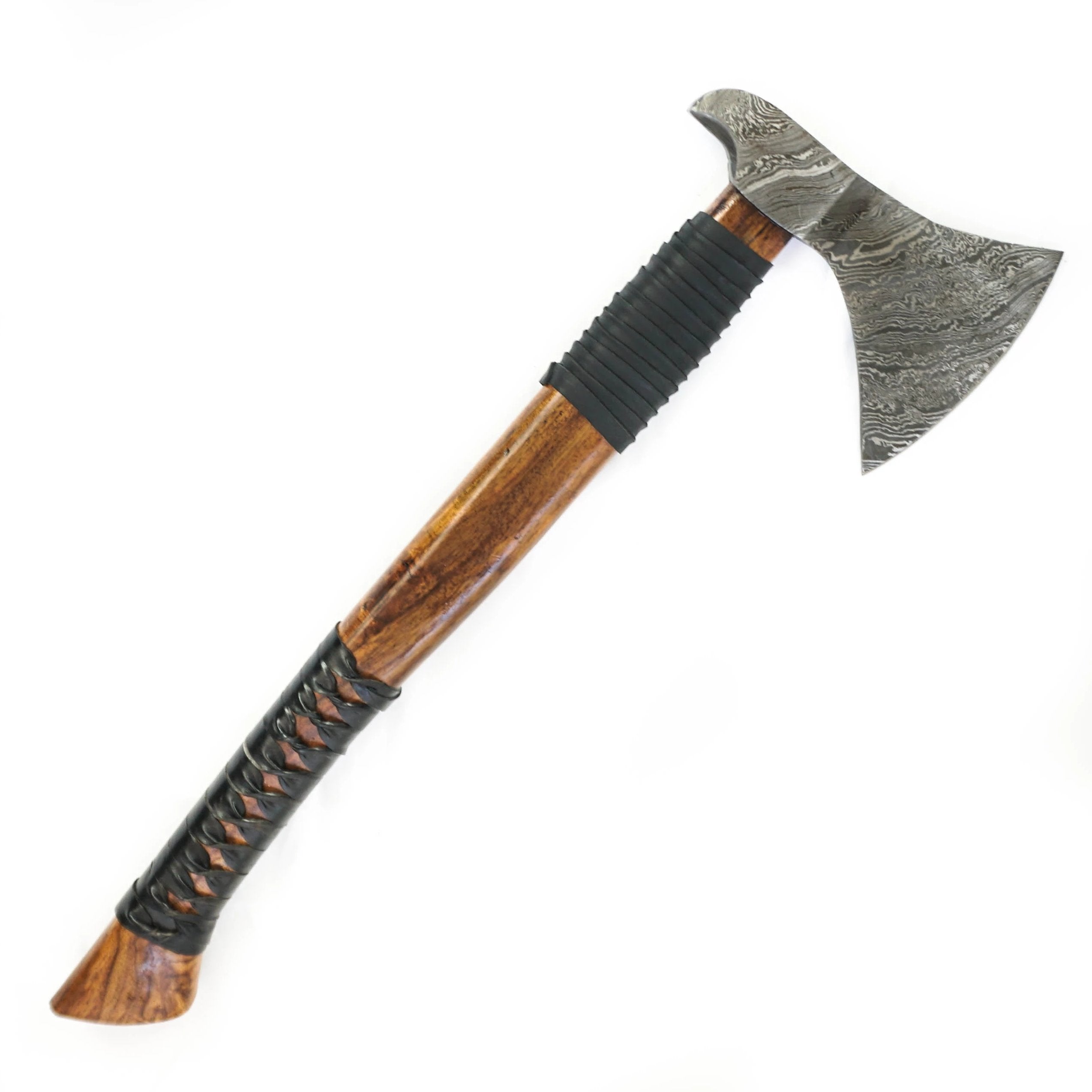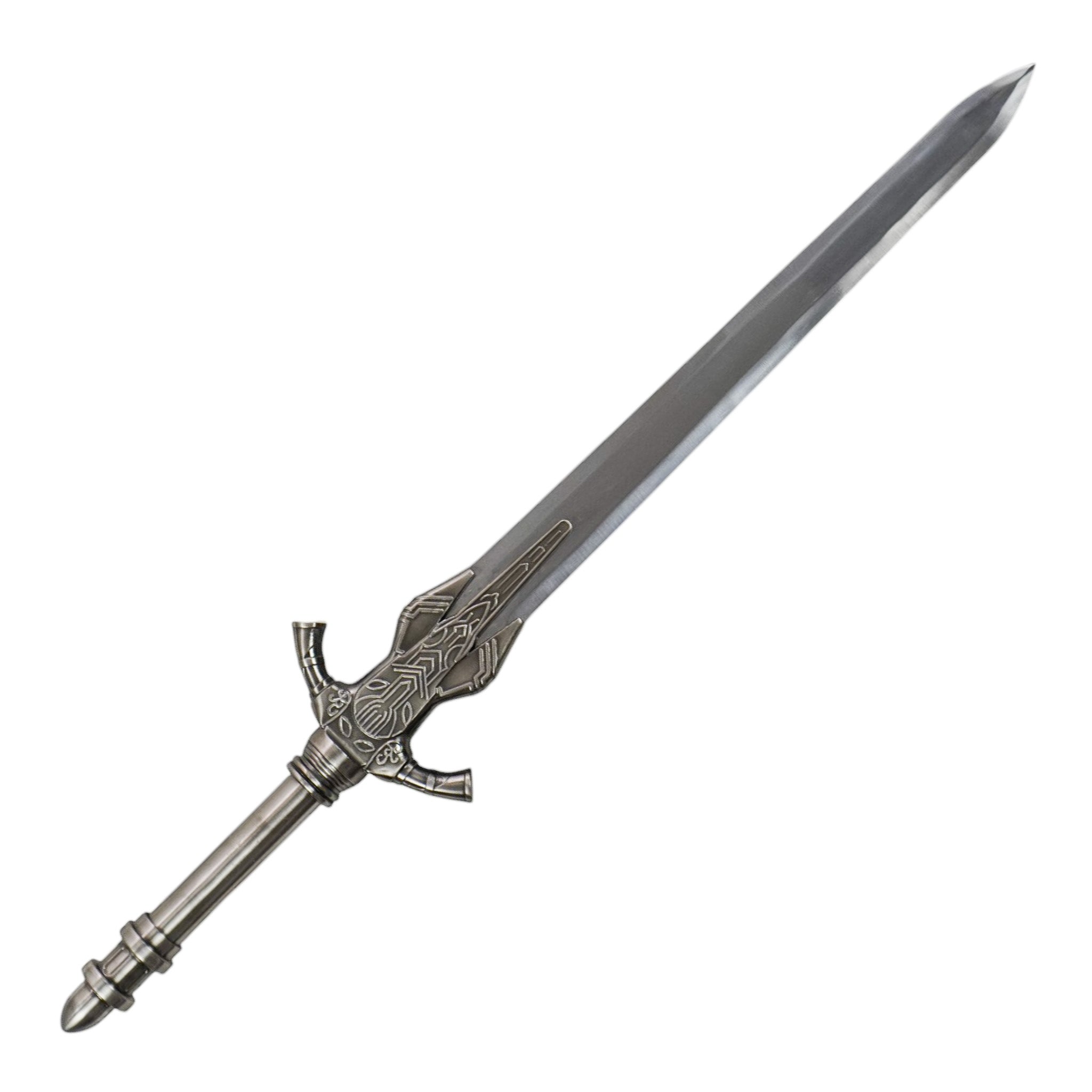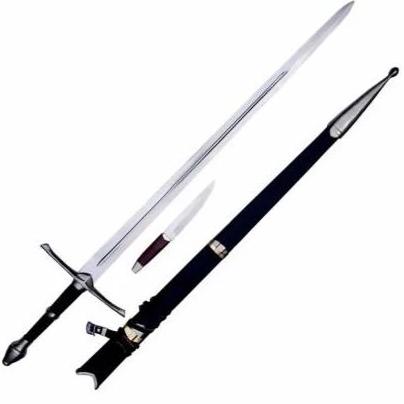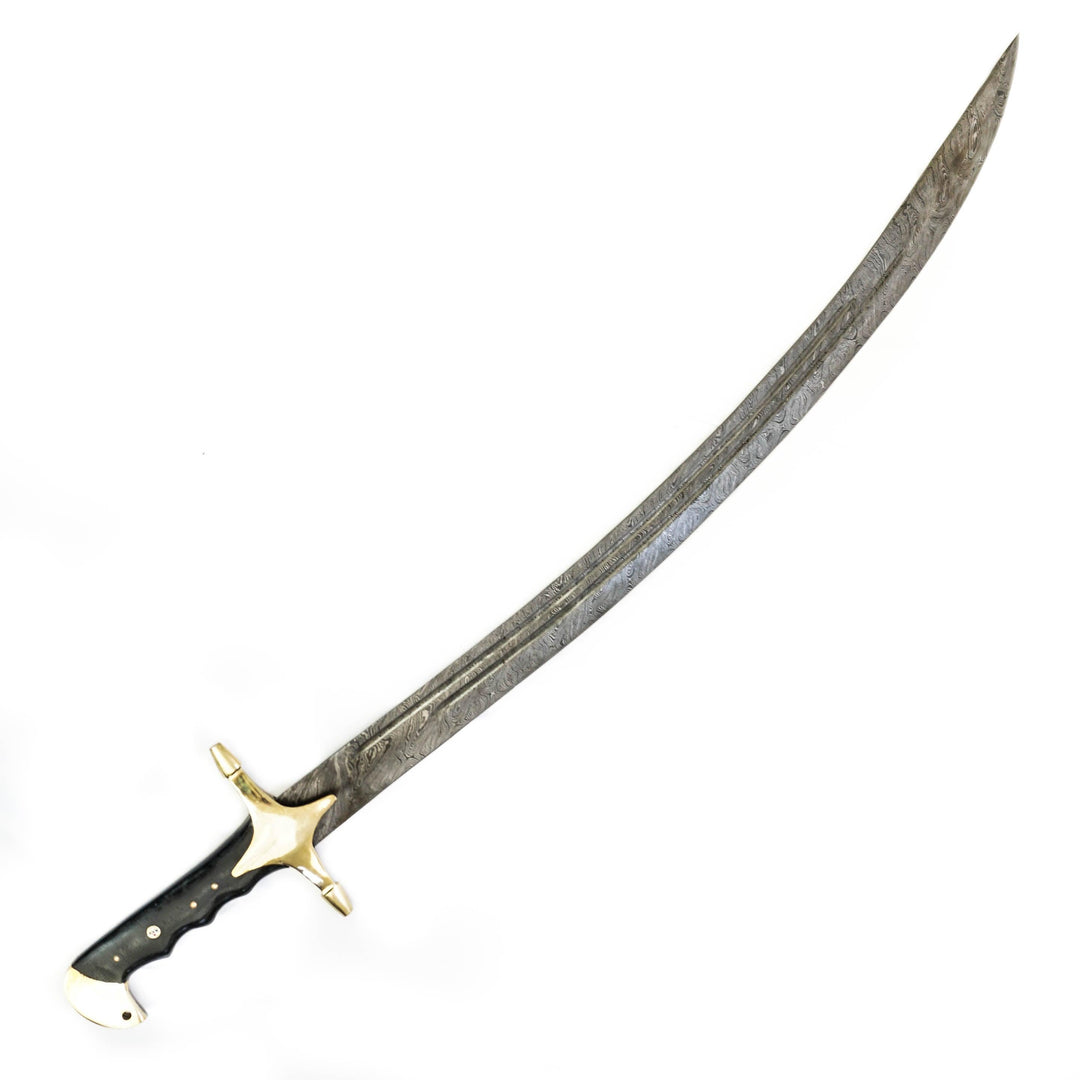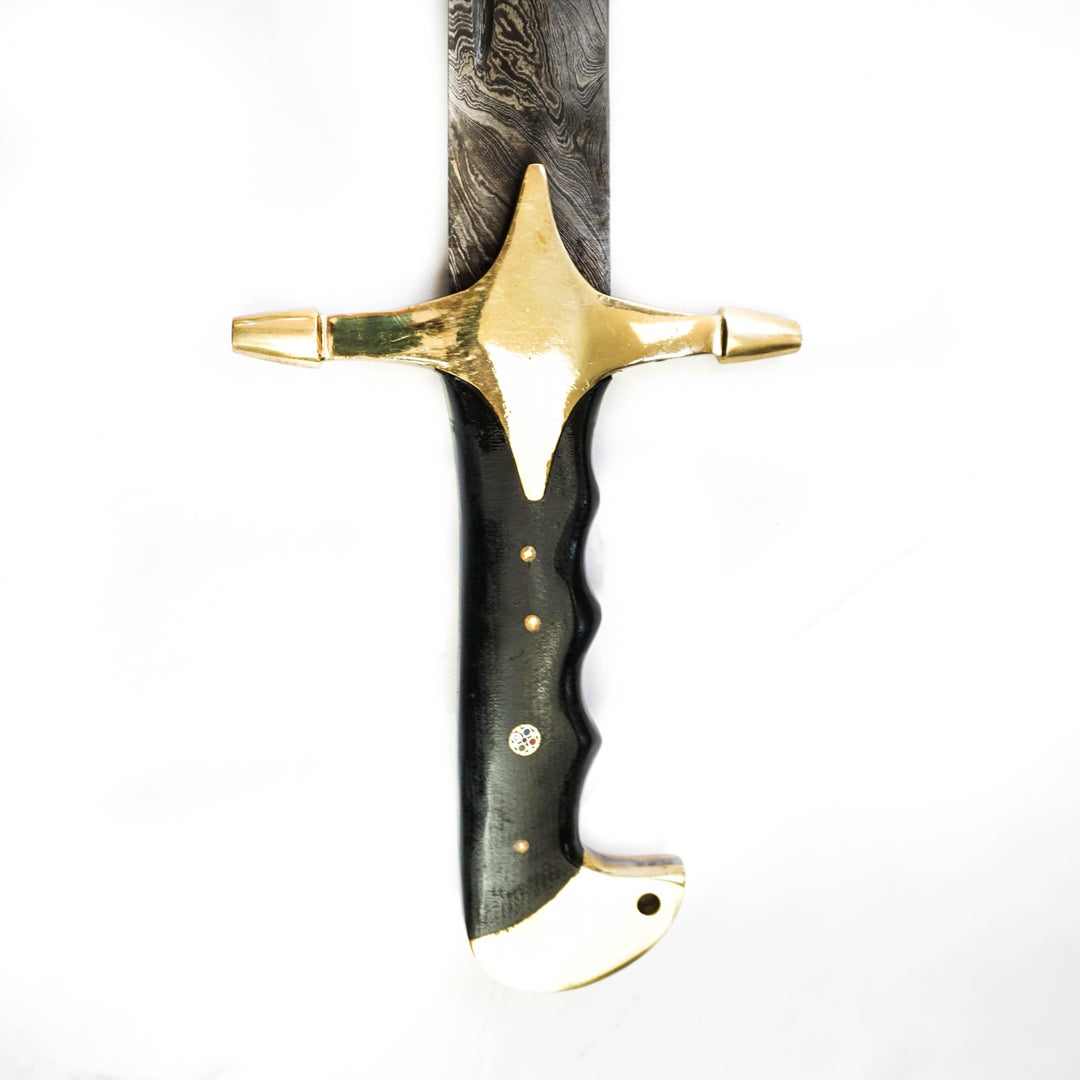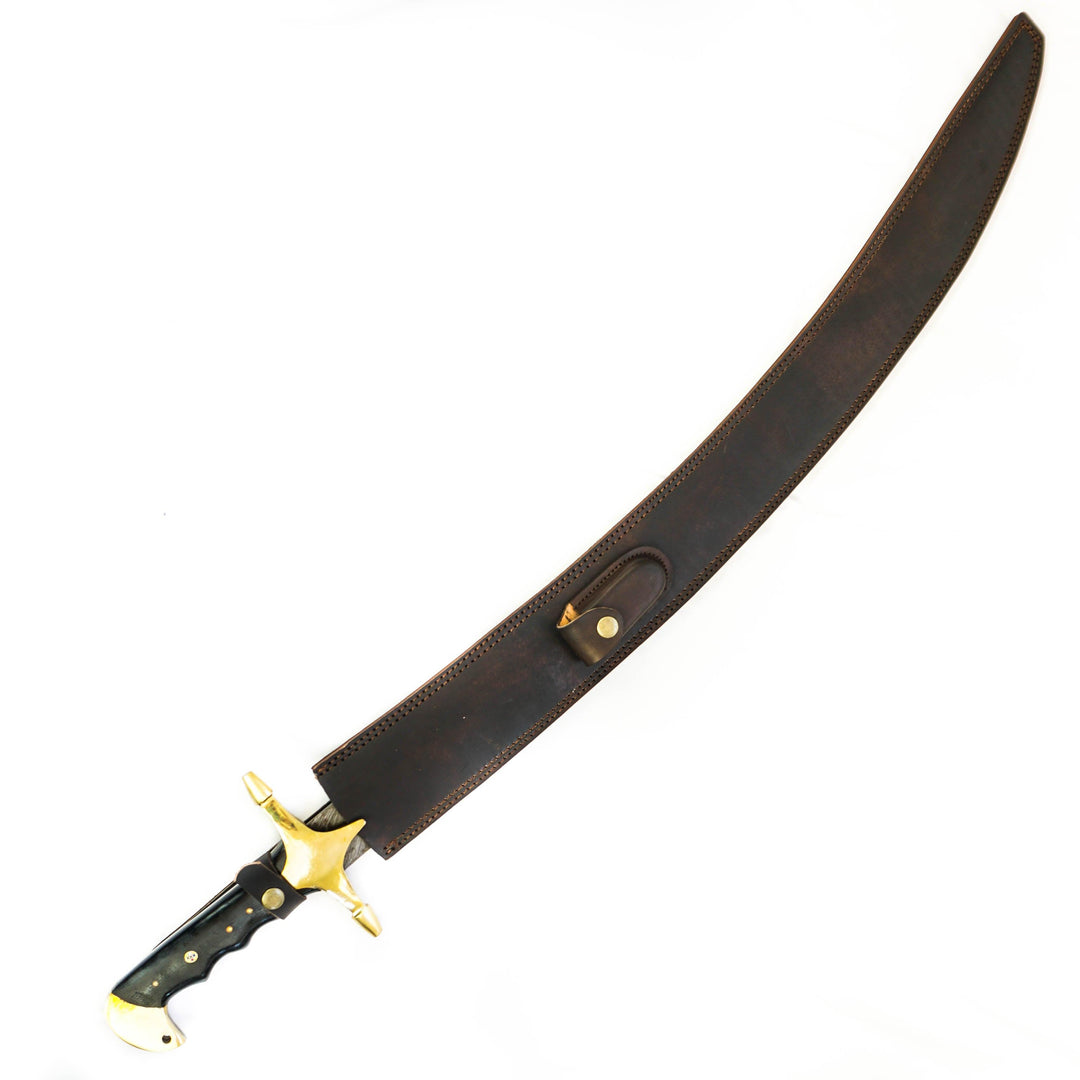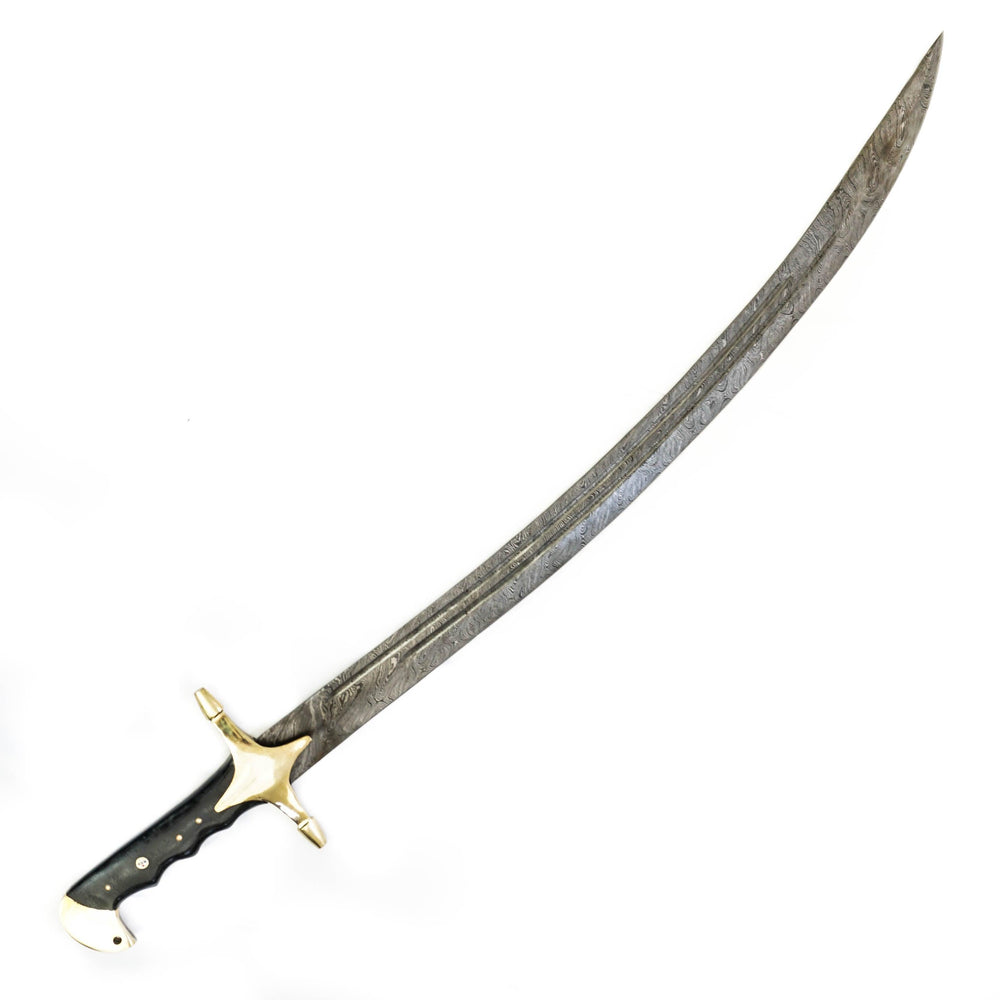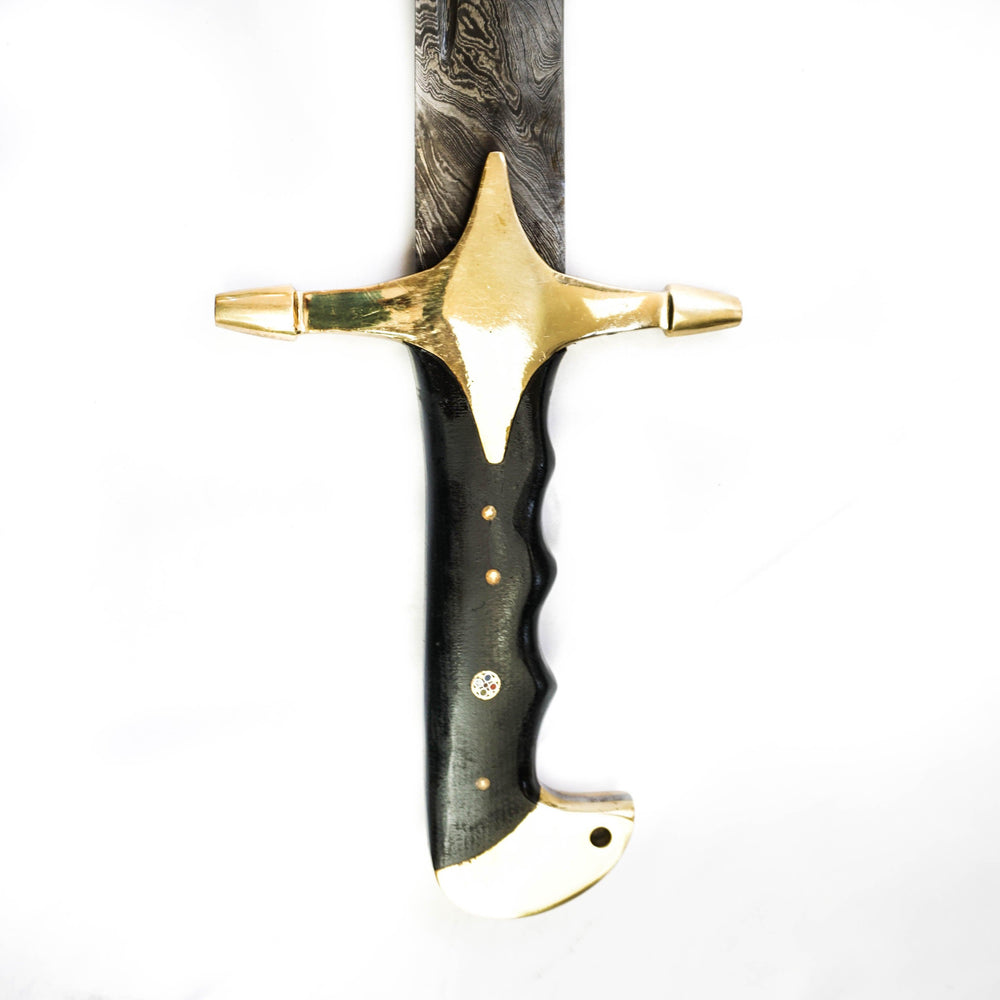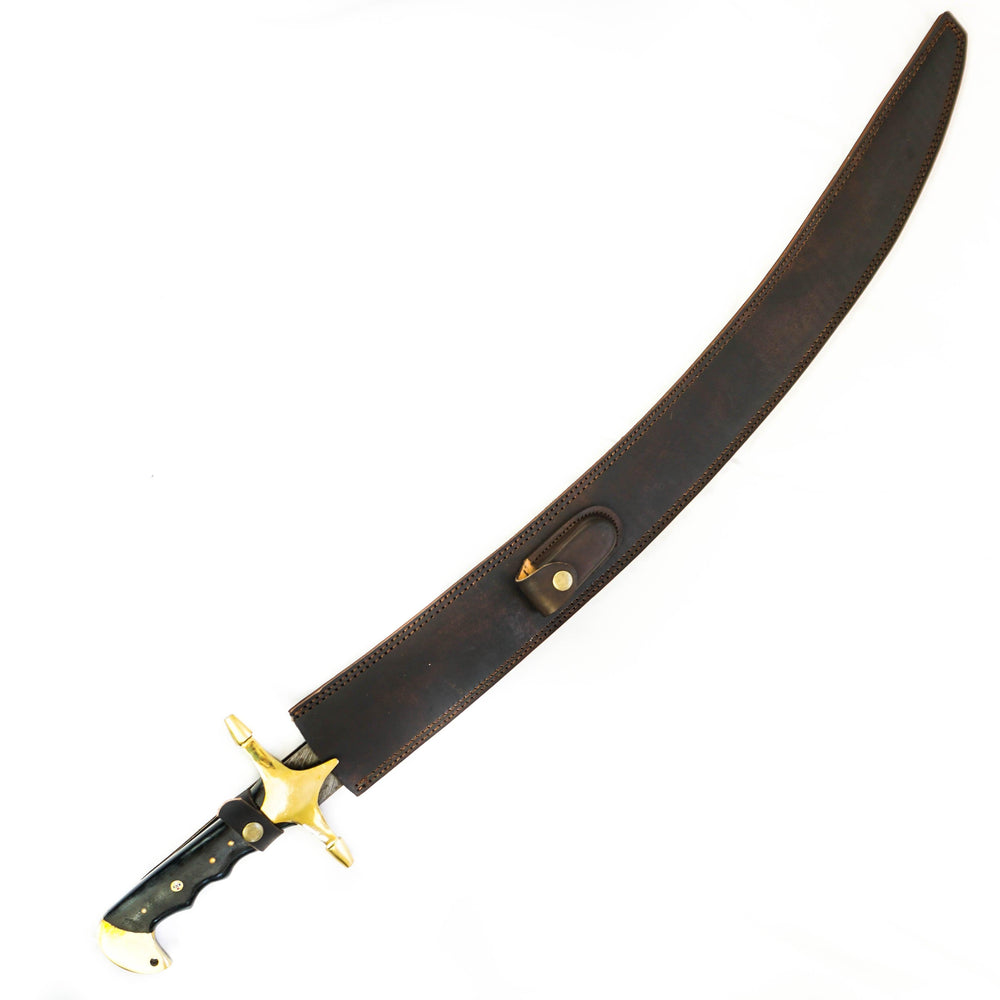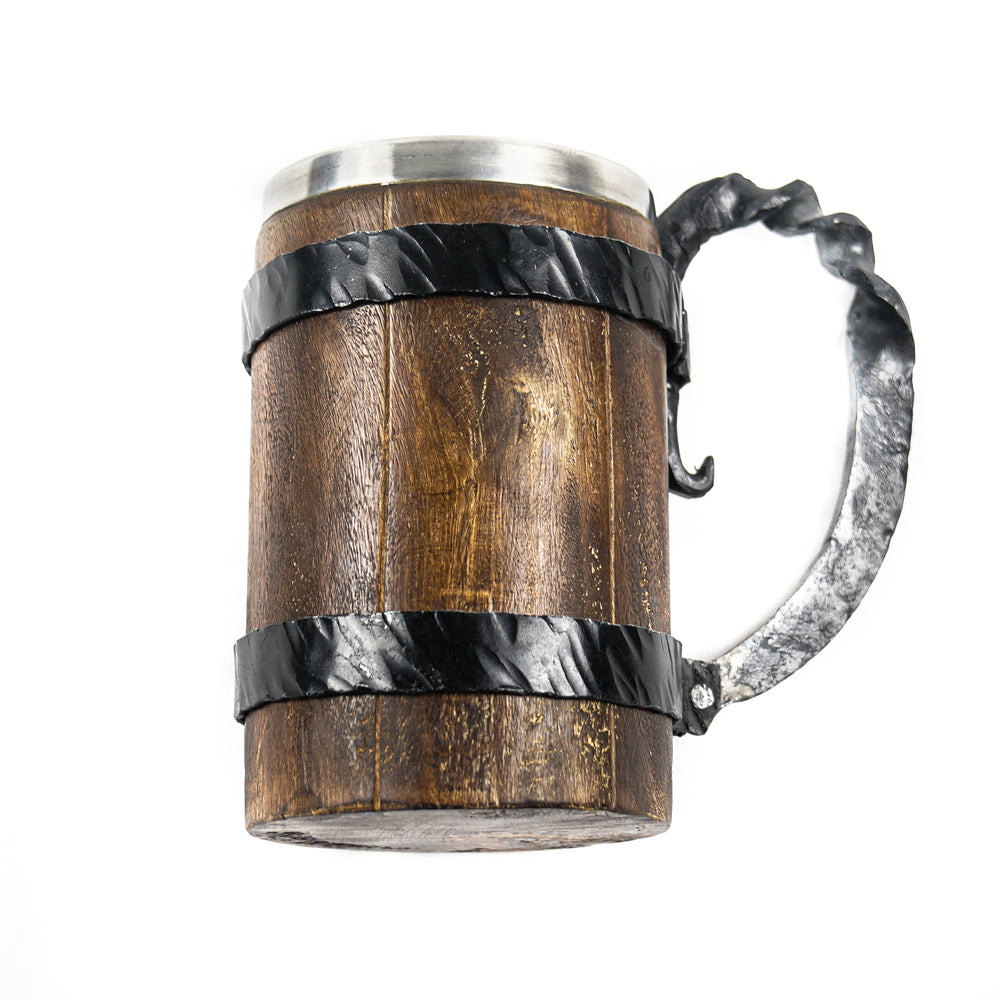The Arabian Scimitar Sword: Elegance and Power
The Arabian Scimitar, with its distinctive curved blade, is a symbol of the historical might and the rich culture of the Middle East. It is a weapon that has been romanticized in tales of Arabian nights and swashbuckling adventures, embodying both the martial prowess and the artistic heritage of the regions from which it originates.
Historical Roots:
- Wide Use: The scimitar was a staple in the Middle East and found its place in the hands of many warriors throughout history, notably during the Ottoman Empire.
- Origins of the Name: The etymology of the word "scimitar" reflects a blending of cultures, with possible roots in the Arabic 'saif' and the Greek 'xiphos'.
Blade Craftsmanship:
- Damascus Steel: Known for its strength, resilience, and the watery or wavy light and dark pattern on its surface, Damascus steel is highly prized among collectors and practitioners alike.
- Laminated Construction: The blade's composition, involving 352 layers of folded steel, echoes traditional forging methods that create a robust and durable weapon.
Design and Quality:
- Curved Blade: The iconic curved shape of the scimitar enhances the sword's cutting power, particularly in mounted combat.
- Rockwell Hardness: With a hardness rating of 55-56 HRC, the blade is engineered to retain its sharpness while also being capable of absorbing impact.
Handle and Aesthetics:
- Handle Material: While the description mentions both bone, horn, and wood for the handle material, the final piece seems to be wood, providing a classic and sturdy grip.
- Ornamentation: The Damascus steel bolsters not only reinforce the structure of the sword but also add an element of traditional beauty.
Protective Sheath:
- The leather sheath not only serves to protect the blade but is also a nod to the traditional way of carrying and storing such weapons.
Conclusion:
The Arabian Scimitar Sword is a magnificent example of weaponry that doubles as a piece of art. Its construction with high carbon Damascus steel makes it a desirable collector's item and also a testament to the enduring legacy of the scimitar in the annals of Middle Eastern history. At 37 inches, this sword would make a prominent display piece or a treasured addition to any collection of historical arms.

